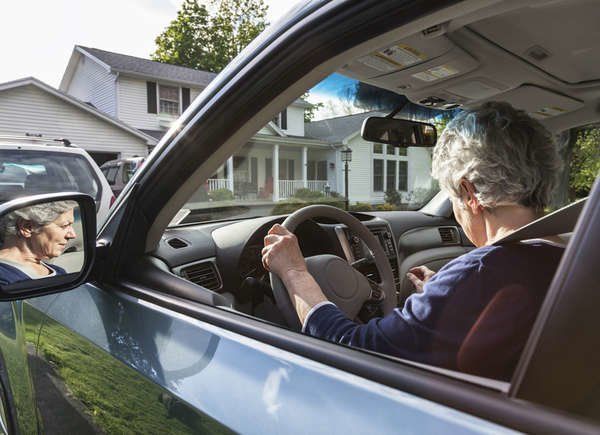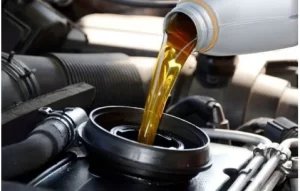
The automotive battery is mainly used in the ignition system, delivering the initial current that sets the car into motion. The vehicle can use the battery as a power source or alternative when not in action.
The alternator will recycle the car’s energy into the battery to keep it charged and ready for use.
The alternator provides electricity to the battery, which reverses its chemical reaction. This recharges the unit.
The process is very efficient, and you shouldn’t have to charge your battery manually all that often. If your battery is dying at short intervals, there are several reasons to consider.
What causes your car battery to drain quicker? What can cause your car battery to drain faster?
Parasitic Drain
The parasitic drain, or parasitic draw, is the continual draining of the car battery after the engine is turned off. This is often due to an electrical issue or wiring problem where specific electrical components in the car do not shut down properly, causing unceasing consumption. This type of battery drain can slowly and surely drain your vehicle’s battery. This could also indicate a bad installation or a blown fuse in the electrical system.
Defective Alternator
The alternator will recharge the battery using mechanical power when the battery is disengaged. The alternator rejuvenates the battery and keeps all electrical components like the AC, lights, infotainment, and other systems in the car working. The alternator with a faulty diode will not be capable of charging the battery fully and will show its poor performance through other electrical components. When the electrical components work well when you are idling but fail once you begin to drive, this could indicate a bad alternator.
Local Charger
There’s no better way to drain your battery quickly than using a local charger. There may be better ways to get the most from your battery than local trickle charges. Some trickle chargers also have a built-in feature that detects when your battery is nearing its maximum amount and stops supplying excess current. Local or faulty chargers are designed to give electricity directly into the storm without considering the specifics, the charge level, etc. The chargers can not only provide a sub-optimal charge, but they may also cause a dead battery.
Leave the lights on
Err is human. This is probably the number one reason for a battery drain overnight. We can all relate to forgetting to turn off the lights after a late-night outing. The exterior and interior lighting should be on for approximately five to six hours. A car battery can be left undercharged if the power consumption exceeds this limit. For example, a fully lit car drains the battery for 10-12 hours. Many new vehicles come with a yellow alert, and some have auto-deactivation. You should always check if your lights are on, as a dead car battery is not fun to discover when you’re running late.
Batteries that are loose or corroded
Battery cables are used to transmit electricity from the vehicle’s battery. The battery will lose power if the positive and negative terminals become loose or corroded. The flexible cables are usually caused by vibrations and bumps on the road, which can cause the battery to rattle. Corrosion of the terminals is caused by overcharging the battery or by hydrogen released from the sulfuric fluid. Corroded and improperly clamped battery connectors can lead to various problems, from the inability to turn on the engine to flickering light to damage to electronic components. Check the battery connectors at least every two months, and take good care of your battery.
Short Trips
The alternator will recharge the battery at a constant rate while the engine runs. If the motor is shut down for a shorter period, the battery may not recover its lost power. This could lead to the battery’s life being shortened. This is a common problem for people who commute short distances to work. To help recharge your battery, it is recommended that you take at least one trip a long distance every week or two.
Extreme temperatures
High and low temperatures can cause sulfate crystals to form in the battery. These crystals then reach inside the unit, causing havoc on your system. High and low temperatures can cause sulfate to crystallize in the storms, damaging the system. Avoiding extreme temperatures is the best way to prevent your battery from draining faster. In the summer, parking in the shade and driving often and long in winter will help minimize the effects of the weather.
We’ve already covered some of the most frequent questions about things that drain car batteries.
What happens to the battery when you jump-start your car?
Jumping a car does drain the battery, which can be quite a lot. The donor battery is used to power the dead battery, which can cause the system to become overloaded and even fatal. If you do it correctly, recharging the battery should be no problem as soon as possible.
What happens if a ground drain battery is bad?
The ground wire system is also essential for a vehicle’s charging system. The ground wire system may not drain the car battery but will affect the charging rate. If you have a bad ground wire, your battery will charge slowly and at low quality. This can be interpreted as the battery draining.
How long does it take to drain a car battery?
Your car battery will last about two months without being charged. You may not start your car if you have left it defunct after a full charge for 2-3 months.
The conclusion of the article is:
A little caution and prevention can make a big difference. This comprehensive list will help you to be better prepared for any battery problems that may arise.
Feel free to contact us with questions about car batteries or if your storm drains excessively. Our mechanics are highly qualified and have years of experience. They will be glad to help you with anything related to cars.

















